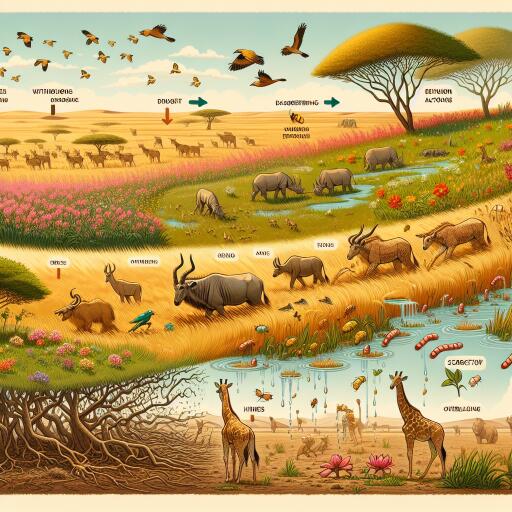
Understanding the Instability of Ecosystems
Ecosystems are vibrant, living entities that depend on a delicate balance of interactions among their constituents to thrive. The stability of these complex ecological networks is paramount to their survival. Yet, factors triggering their instability often elude even the most dedicated scientific inquiry due to their complexity. Through innovative research, insight has emerged into the critical elements influencing ecosystem behavior, shedding light on how we might better predict and perhaps mitigate the destabilizing forces at play.
At the heart of understanding ecosystem dynamics lies the investigation of the interplay between the various species within a community and the intensity of their interactions. Recent studies leveraging controlled environments have provided a groundbreaking view of how ecosystems transition through different states of stability and instability, reminiscent of the phase transitions in matter, such as water moving from solid to liquid to gas.
Central to this research is the development of an “ecosystem phase diagram,” a conceptual tool that maps out the conditions under which ecosystems can shift from states of coexistence and stability to those of volatility and potential collapse. This remarkable framework has been achieved through meticulous experimentation with bacterial communities, ranging from two to 48 different species, manipulated to mimic the increasing complexity of natural ecosystems.
The Role of Species Diversity and Interaction Intensity
One of the pioneering discoveries from this research is the identification of two critical variables that govern ecosystem behavior: the number of species present and the intensity of their interactions. By varying these factors, scientists have observed ecosystems transitioning through three distinct phases.
- Stable Complete Existence: Initially, ecosystems exhibit a peaceful coexistence among all species, with no signs of interference or competitive exclusion.
- Stable Partial Coexistence: As the complexity increases, either through more species or heightened interaction, ecosystems enter a phase where some species may perish, but overall stability and population balance are maintained.
- Unstable Oscillations: Further intensifying the interactions or species count leads to ecosystems experiencing significant population fluctuations and instability, although surprisingly, a larger proportion of species may survive.
This progression underscores the nuanced impact of species diversity and interaction strength on the ecological fabric, highlighting how even seemingly minor changes can lead to profound shifts in ecosystem dynamics.
Implications and Future Directions
The creation of the ecosystem phase diagram represents a significant leap forward in our ability to predict changes in ecosystems with minimal data. By understanding the role of species count and interaction strength, ecologists can forecast potential shifts in natural habitats like forests with greater confidence, despite limited specific knowledge about individual species’ roles or relationships.
This approach equips scientists with a powerful predictive tool, suggesting that the broader statistical properties of species interactions, rather than detailed knowledge of each species’ behavior, can offer insights into ecosystem stability. Ongoing research aims to explore how species migration between isolated communities, akin to island ecosystems, affects population dynamics and biodiversity conservation.
In summary, the study of ecosystems through the lens of phase transitions not only enlightens our understanding of ecological stability but also serves as a beacon for future conservation efforts. As we continue to peel back the layers of complexity that define natural environments, such insights promise not just to illuminate the paths of research but also to guide actions towards sustaining the vibrant tapestry of life on our planet.





Leave a Reply